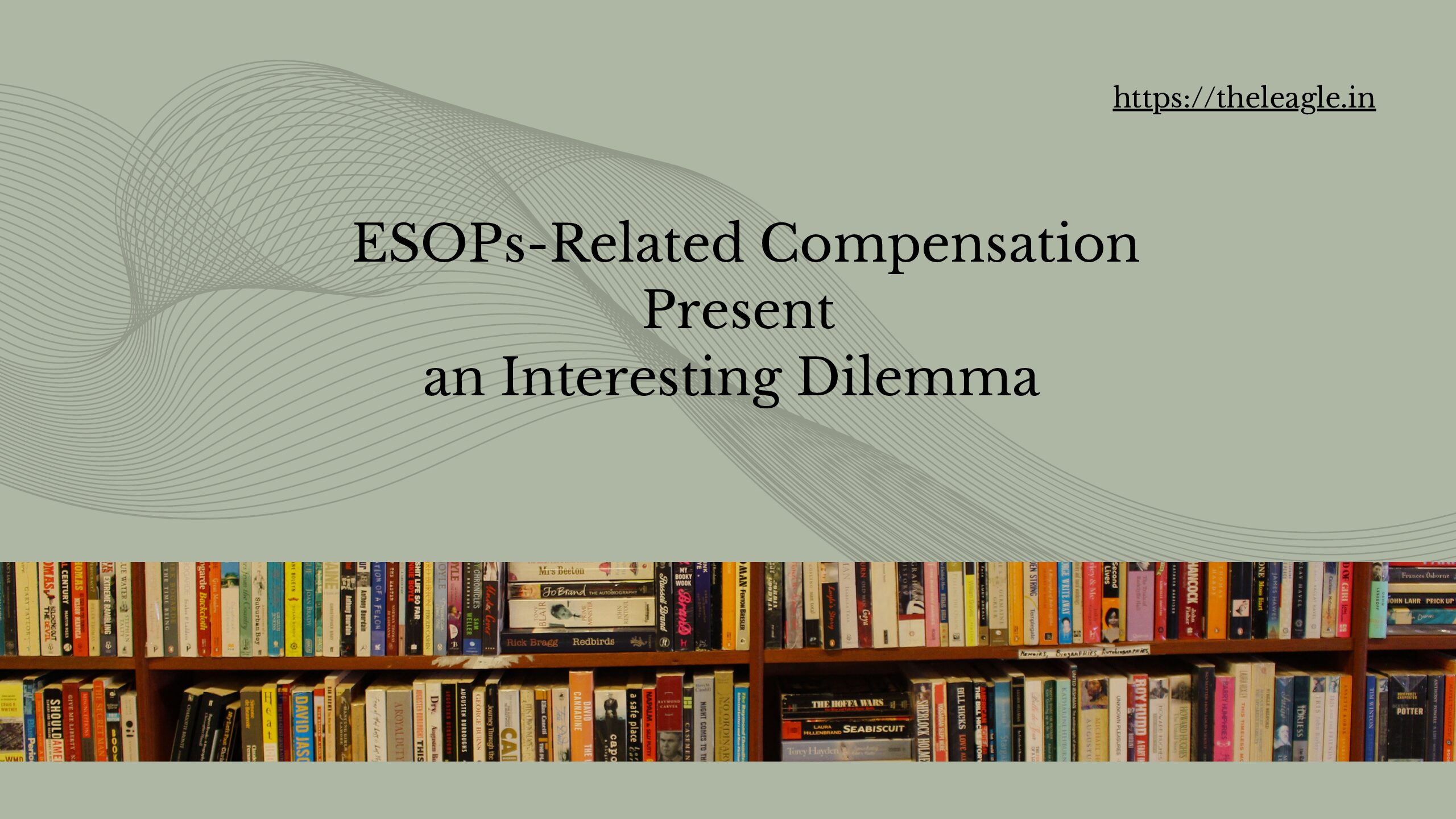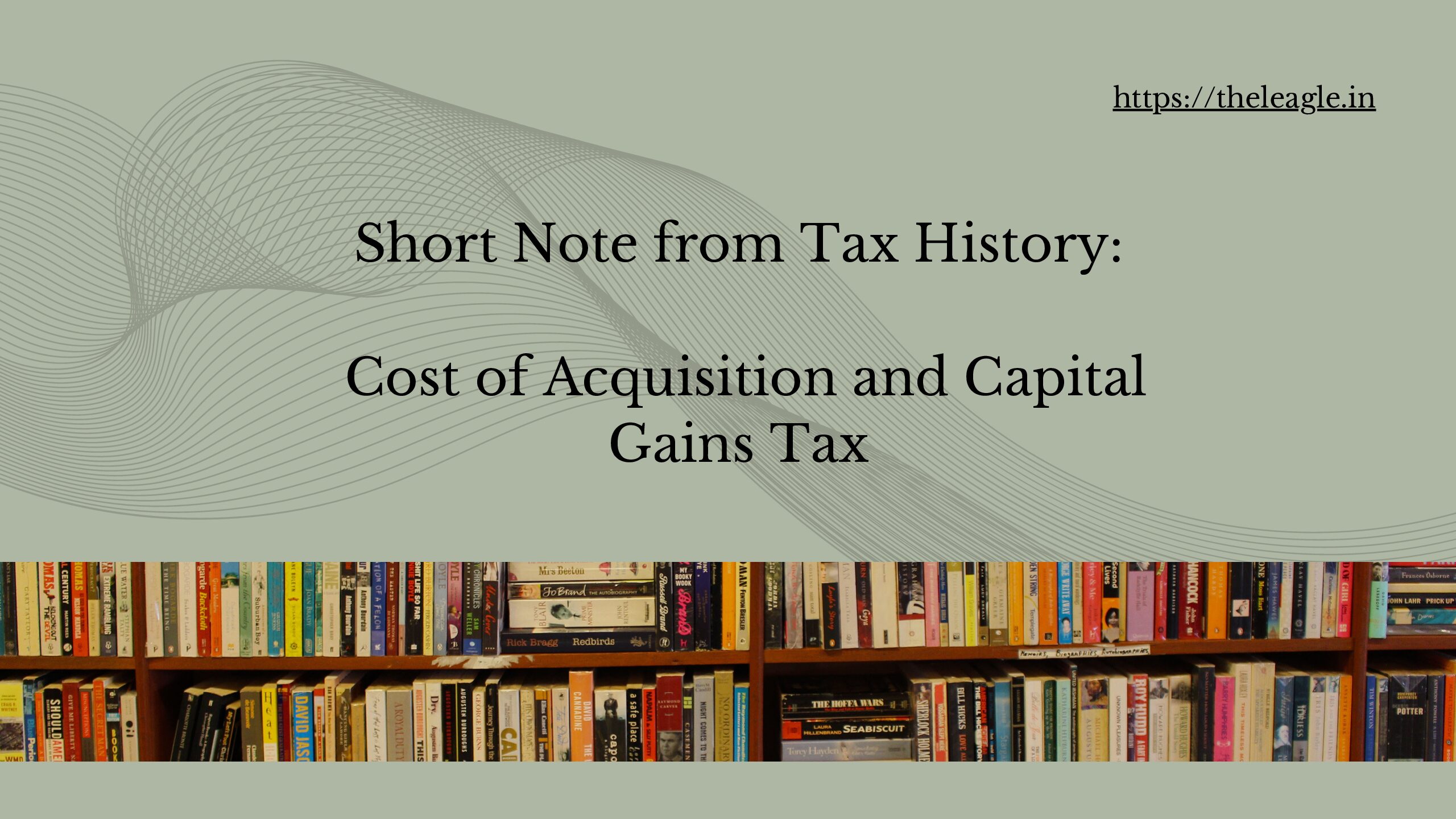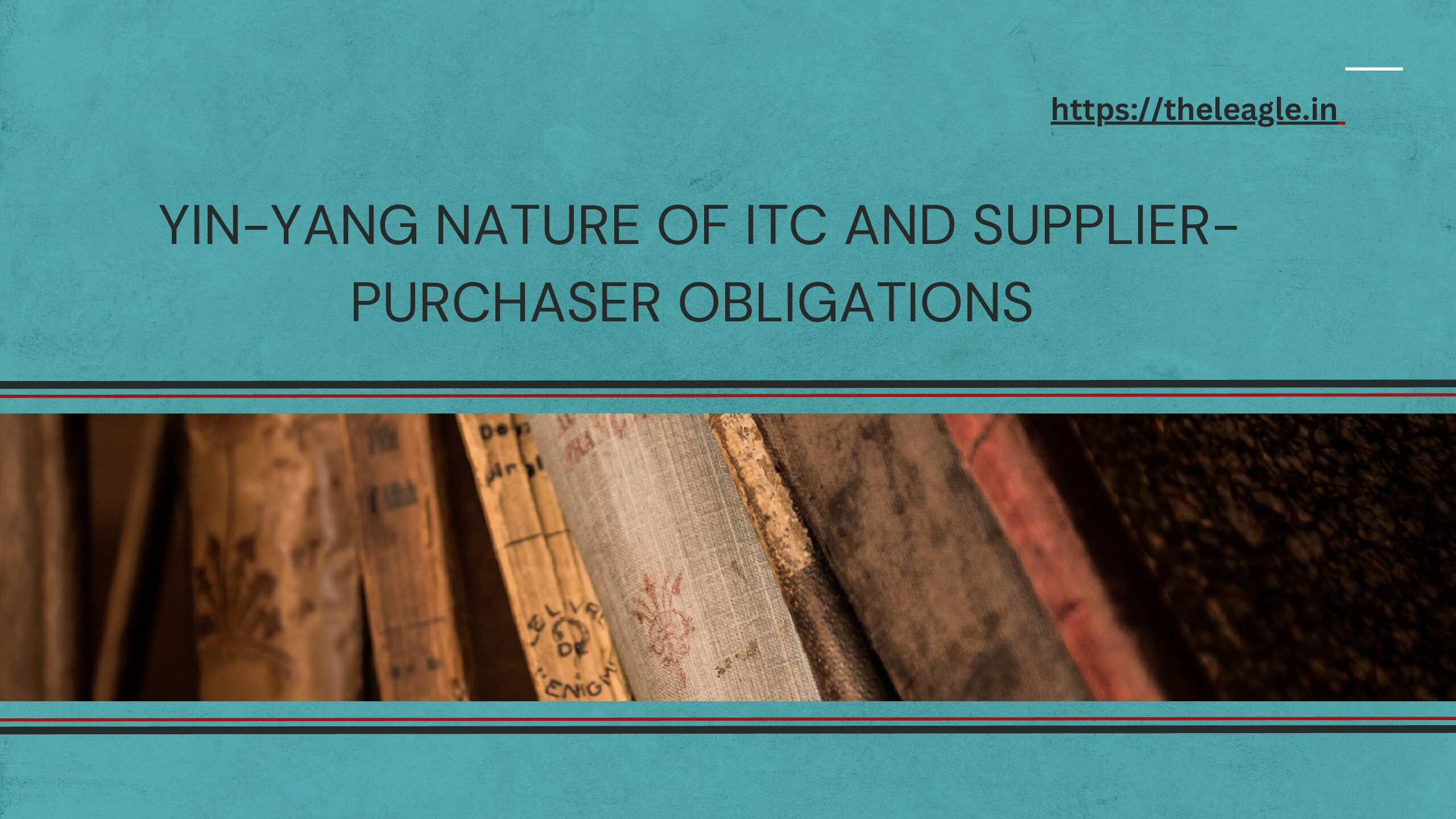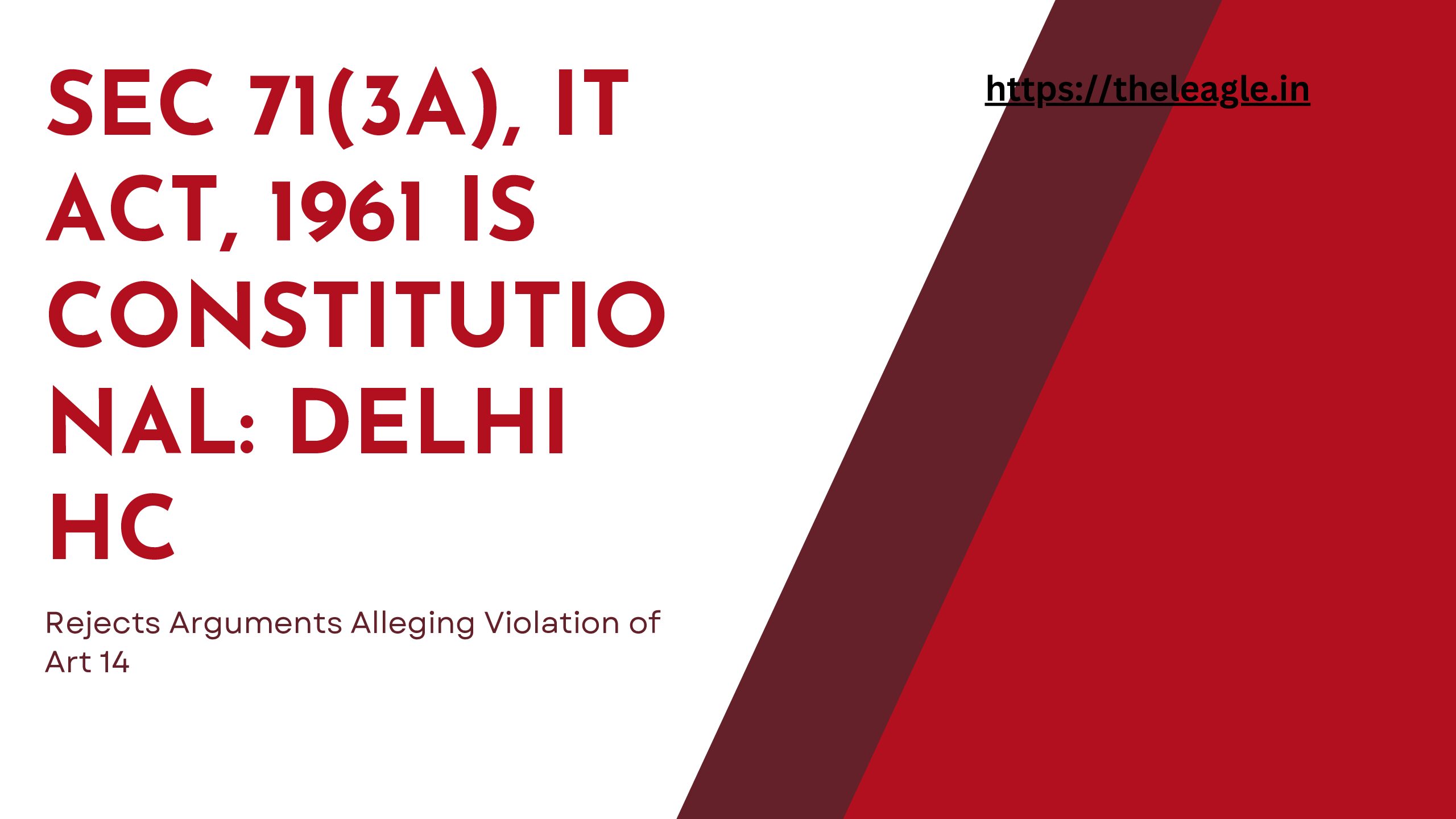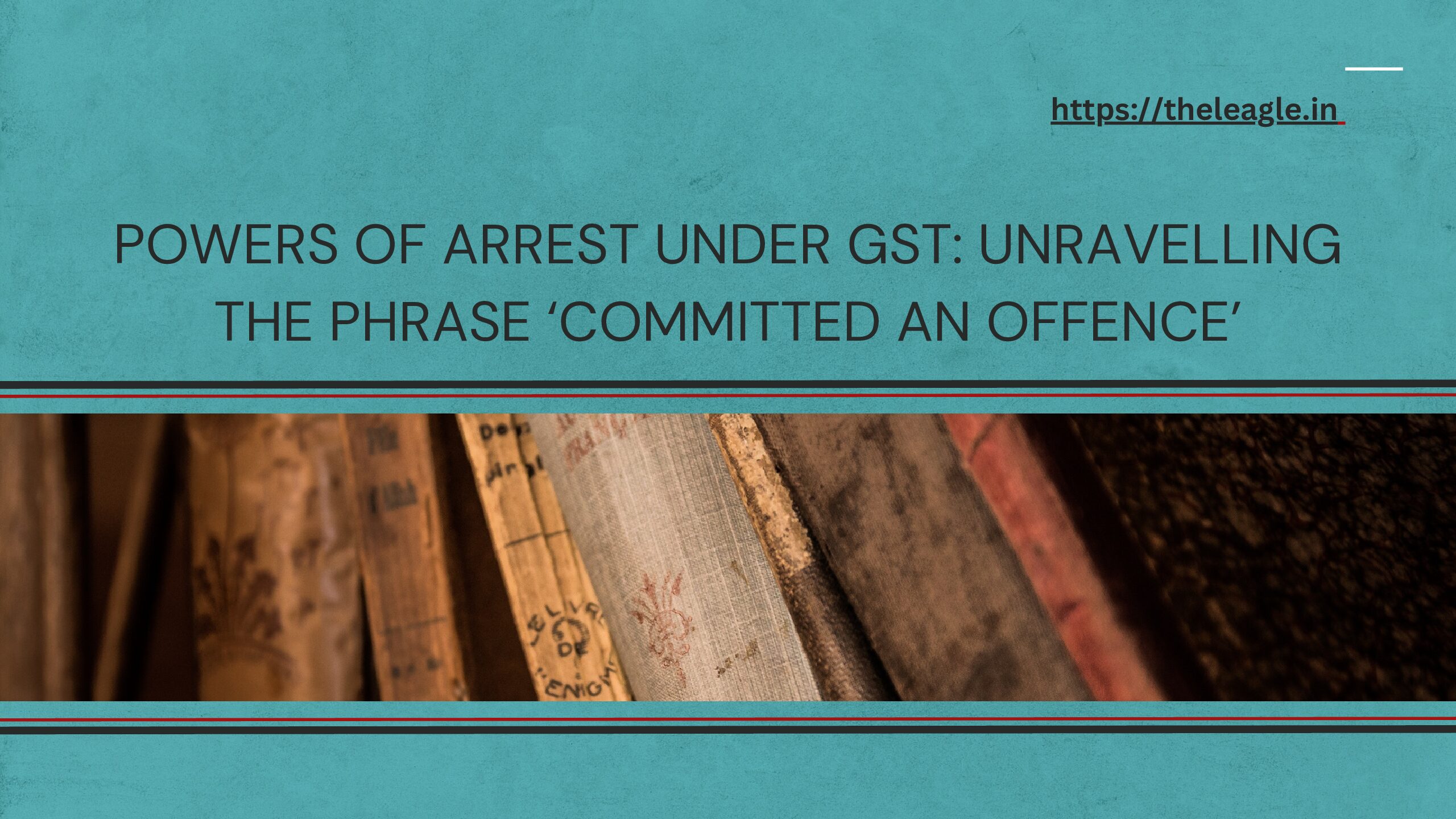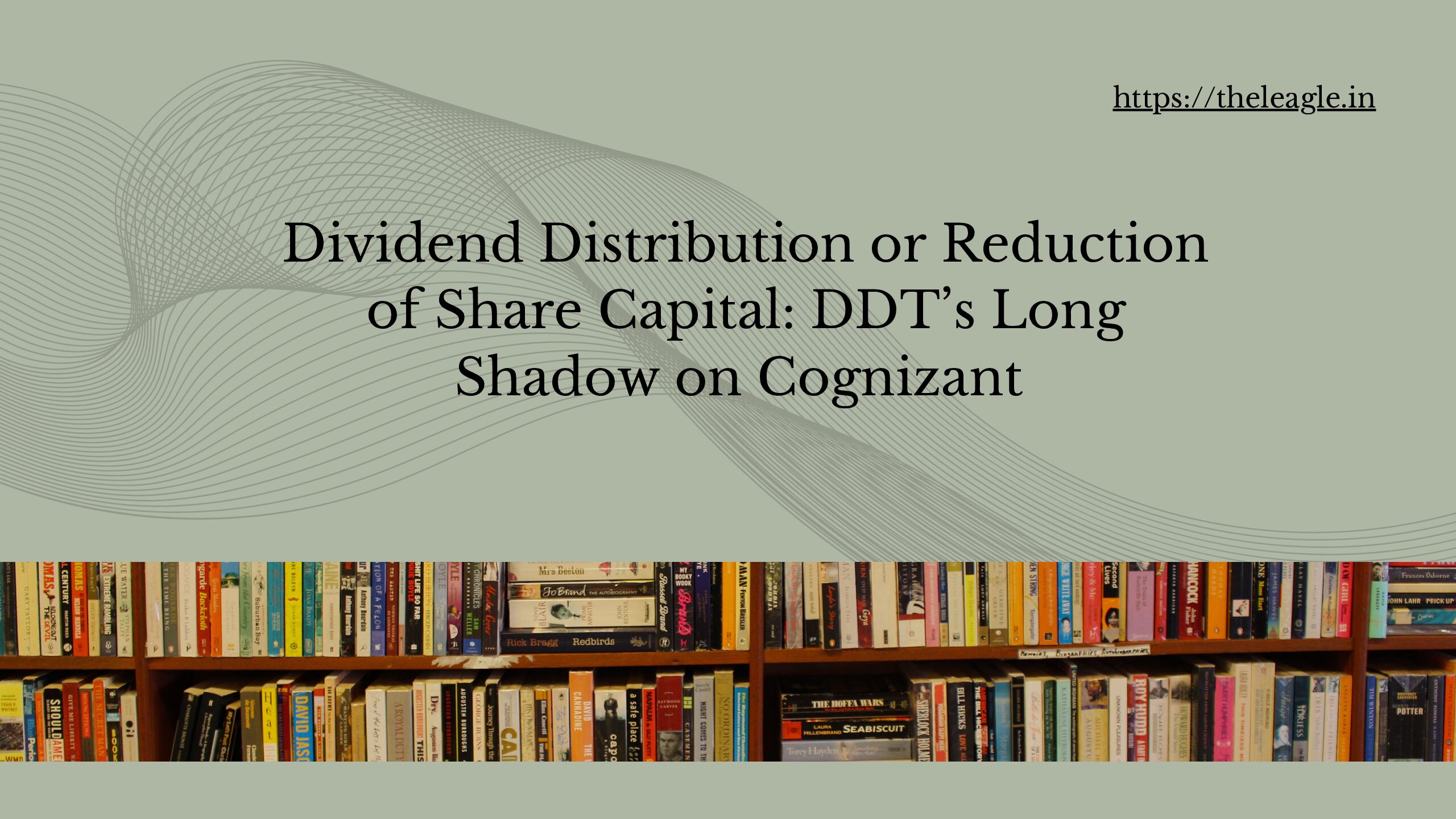Introduction
Employee Stock Options (ESOPs) are typically taxable under the IT Act, 1961 in the following two instances:
first, at the time of exercise of option by the employee as a perquisite. The rationale is that the employee has received a benefit by obtaining the share at a price below the market price and thereby the difference in the option price and the market price constitutes as a perquisite is taxable under the head ‘salaries.’
second, when the said stocks are sold by the employees, the gains realized are taxed as capital gains.
In above respects, the law regarding taxability of ESOPs is well-settled. Of late, two cases – one decided by the Delhi High Court and another by the Madras High Court – have opined on another issue: taxability of compensation received in relation to ESOPs. Both the High Courts arrived at different conclusions on the nature of compensation received and its taxability. In this article I examine both the decisions in detail to highlight that determining the taxability of compensation received in relation to ESOPs – before exercising the options – is not a straightforward task and presents a challenge in interpreting the relevant provision and yet one may not have a completely acceptable answer to the issue.
Facts
The facts of both the cases are largely similar and in interest of brevity I will mention the facts as recorded in the Madras High Court’s judgment. The petitioner was an employee of Flipkart Interest Private Limited (FIPL) incorporated in India and a wholly owned subsidiary of Flipkart Marketplace Private Limited (FMPL) incorporated in Singapore. The latter was in turn a subsidiary of Flipkart Private Limited Singapore (FPS).
FPS implemented the Flipkart Employee Stock Option Scheme, 2012 under which stock options were granted to various employees and other persons approved by the Board. In April 2023, FPS announced compensation of US $43.67 per ESOP is view of the divestment of its stake in the PhonePe business. As per FPS, the divestment of PhonePe reduced the potential of stocks in respect for which ESOPs were offered to the employees. The compensation was payable to stakeholders in respect of vested options, but only to current employees in case of unvested options. FPS clarified that the compensation was being paid to the employees despite there being no legal or contractual obligation on its part to pay the said compensation.
The petitioner received US$258,701.08 as compensation from FPS after deduction of tax at source under Section 192, IT Act, 1961 since the said compensation was treated by FPS as part of ‘salary’. The petitioner claimed that the compensation was a capital receipt and applied for a ‘nil’ TDS certificate arguing that the compensation was not taxable under the IT Act, 1961. But the petitioner’s application was denied against which the petitioner filed a writ petition and approached the Madras High Court.
Characterizing the Compensation – Summary of Arguments
The petitioner’s arguments for treating the compensation as a capital receipt were manifold:
First, that the petitioner continued to hold all the ESOPs after receipt of compensation and since there was no transfer of capital assets, no taxable capital gains can arise from the impugned transaction.
Second, the compensation received by the petitioner was not a consideration for relinquishment of the right to sue since the compensation was discretionary in nature. The petitioner did not have a right to sue FPS if the said compensation was not awarded.
Third, in the context of taxable capital gains: IT Act, 1961 contains machinery and computation provisions for taxation of all capital gains which are absent in the impugned case. In the absence of computation provisions relating to compensation received in relation to ESOPs and lack of identification of specific provisions under which such compensation is taxable, the petitioner argued that attempt to tax the compensation should fail.
Fourth, the petitioner before the Delhi High Court was an ex-employee of FIPL and the petitioner relied on the same to argue that the compensation received in relation to ESOP cannot be treated as a salary or a perquisite since it was a one-time voluntary payment by FPS in relation to ESOPs.
The State resisted petitioner’s attempt to carve the compensation out of the scope of salaries and perquisites. The primary argument seemed to be that the petitioner’s ESOPs had a higher value when FPS held stake in the PhonePe businesss, and on divestment of its stake, the value of ESOPs declined and thus petitioner had a right to sue for the decline in value of ESOPs. The compensation paid to the petitioner, the State argued was a consideration for relinquishment of the right to sue and the said relinquishment amounted to transfer of a capital asset.
ESOPs are not a Capital Asset – Madras High Court
The Madras High Court was categorical in its conclusion that ESOPs are not a capital asset, and neither was there any transfer of capital asset in the impugned case. Section 2(14), IT Act, 1961 defines a capital asset as –
- property of any kind held by an assessee, whether or not connected with his business or profession;
Explanation 1 of the provision clarifies that property includes rights in or in relation to a company. Since the petitioner did not hold any rights in relation to an Indian company, Explanation 1 was inapplicable to the impugned case.
The Madras High Court examined the petitioner’s rights and observed that under the ESOP scheme, petitioner had a right to receive the shares subject to exercise of options as per terms of the scheme. And only in case of breach of obligation by the employer would the petitioner have a right to sue for compensation. Apart from the above, the petitioner had no right to a compensation nor was there a guarantee that value of its ESOPs would not be impaired. Accordingly, the Madras High Court correctly held that:
In the absence of a contractual right to compensation for diminution in value, it cannot be said that a non-existent right was relinquished. As discussed earlier, the ESOP holder has the right to receive shares upon exercise of the Option in terms of the FSOP 2012 and the right to claim compensation if such right were to be breached. But, here, the compensation was not paid for relinquishment of ESOPs or of the right to receive shares as per the FSOP 2012. In fact, the admitted position is that the petitioner retains all the ESOPs and the right to receive the same number of shares of FPS subject to Vesting and Exercise. Upon considering all the above aspects holistically, I conclude that ESOPs do not fall within the ambit of the expression “property of any kind held by an assessee” in Section 2(14) and are, consequently, not capital assets. As a corollary, the receipt was not a capital receipt. (para 29)
The Madras High Court concluded since the petitioner did not exercise any option in respect of vested ESOPs, no shares of FPS were issued or allotted to it meaning there was no transfer of capital asset either. Thus, in the absence of a right to receive compensation for diminution in value of ESOPs or transfer of capital assets it cannot be said that the petitioner was paid compensation for relinquishment of the right to sue or had received taxable capital gains.
ESOPs are not Perquisites – Delhi High Court
The second primary question which engaged both the Delhi and the Madras High Court was whether the compensation received by the petitioner constituted as perquisite under Section 17, IT Act, 1961. Section 17(2)(vi), IT Act, 1961 states that a perquisite includes:
the value of any specified security or sweat equity shares allotted or transferred, directly or indirectly, by the employer, or former employer, free of cost or at concessional rate to the assessee.
To begin with, let me elaborate on the Delhi High Court’s reasoning and conclusion.
In trying to interpret if the compensation received by the petitioner would fall within the remit of Section 17(2)(vi), IT Act, 1961 the Delhi High Court observed that a literal interpretation of the provision reveals that the value of specified securities or sweat equity shares is dependent on the exercise of options by the petitioner. An income can only be included in the definition of perquisite if it is generated by exercise of options by an employee. The High Court added:
Under the facts of the present case, the stock options were merely held by the petitioner and the same have not been exercised till date and thus, they do not constitute income chargeable to tax in the hands of the petitioner as none of the contingencies specified in Section 17(2)(vi) of the Act have occurred. (para 25)
The Delhi High Court further added that the compensation could not be considered as perquisite since:
… it is elementary to highlight that the payment in question was not linked to the employment or business of the petitioner, rather it was a one-time voluntary payment to all the option holders of FSOP, pursuant to the disinvestment of PhonePe business from FPS. In the present case, even though the right to exercise an option was available to the petitioner, the amount received by him did not arise out of any transfer of stock options by the employer. Rather, it was a one- time voluntary payment not arising out of any statutory or contractual obligation. (para 27)
The Delhi High Court’s above reasoning and conclusion are defensible on the touchstone of strict interpretation of tax statutes. Unless the stocks were allotted or transferred, the conditions specified in Section 17(2)(vi) were not satisfied ensuring the compensation is outside the scope of the impugned provision. Further, the fact of petitioner being an ex-employee influenced the High Court in de-linking the compensation from employment of the petitioner.
ESOPs are Perquisites – Madras High Court
The Madras High Court went a step further than the Delhi High Court and also examined Explanation (a) to Section 17(2)(vi) which states that:
“specified security” means the securities as defined in clause (h) of section 2 of the Securities Contracts (Regulation) Act, 1956 (42 of 1956) and, where employees’ stock option has been granted under any plan or scheme therefor, includes the securities offered under such plan or scheme; (emphasis added)
The Madras High Court emphasised three aspects of the Explanation: first, that the petitioner admittedly received the ESOPs under a ‘plan or scheme’, i.e., Flipkart Employee Stock Option Scheme, 2012; second, that the use of word ‘includes’ in the latter part indicates that the phrase ‘securities offered under such plan or scheme’ is not meant to be exhaustive; third, that follows from the second is that ‘specified security’ in the context of ESOPs does not include shares ‘allotted’ but also includes securities ‘offered’ to the holder of ESOPs.
The Madras High Court further added that in order to tax the compensation received by the petitioner as a perquisite, the benefit flowing to the petitioner must be ascertained. That though was not a difficult task as the High Court noted, in its own words:
ESOPs were clearly granted to the petitioner as an Employee under the FSOP 2012. If payments had been made by the petitioner in relation to the ESOPs, it would have been necessary to deduct the value thereof to arrive at the value of the perquisite. Since the petitioner did not make any payment towards the ESOPs and continues to retain all the ESOPs even after the receipt of compensation, the entire receipt qualifies as the perquisite and becomes liable to be taxed under the head “salaries”. (para 40)
The Madras High Court’s interpretation of the impugned provision also adheres to a strict interpretation of the statute. And one crucial reason its conclusion differs from that of the Delhi High Court is because the Madras High Court also took note of the Explanation to Section 17(2)(vi) and interpreted it strictly to include within the remit of perquisite not only share allotted or transferred but also shares securities offered under a plan or scheme. And before exercise of options by an employee, the ESOPs can be accurately understood as an offer for securities.
One could, however, argue as to whether the legislative intent was to tax and include within the remit of perquisite a one-off compensation by the company to a person who had yet to exercise their options or was the intent to cover all kinds of securities offered and allotted to the option grantee. But, the counterargument is that legislative intent is difficult to ascertain in this particular case and the manner in which the Madras High Court interpreted Explanation(a) alongside Section 17(2)(vi) reveals adherence to strict interpretation, which in itself is reflective of manifesting legislative intent. Additionally, one could argue that the compensation is included in ‘value of securities offered’ since it was meant to compensate the option grantee for diminution in value of securities in relation to which ESOPs were offered. One could also argue that the Delhi High Court treated the ‘exercise of options’ as a taxable event under Section 17(2)(vi), which is a correct reading of the provision. And that the High Court not acknowledging Explanation(a) since the latter cannot expand the former’s scope. I do feel that there are several persuasive arguments but not one overarching clenching argument in this particular issue.
Conclusion
I’ve attempted a detailed analysis of both the judgments with a view to provide clarity on the interpretive approach and reasoning of both the High Courts on the issue. While both the High Courts adopted a strict interpretive approach, the Madras High Court by taking cognizance of the Explanation alongside the provision arrived at a conclusion that was at variance with the Delhi High Court.
Prima facie though, the provisions as they exist today do not seem to contemplate compensation received by an option grantee before the exercise of options. Regarding ESOPs, there are two taxable scenarios contemplated – on exercise of options and on sale of securities – and taxability of compensation, it seems can only be read into the relevant provisions – specifically Section 17(2)(vi) – by a process of interpretation. As the Madras High Court itself noted the compensation paid in the impugned case was atypical creating the conundrum of whether it was taxable under the relevant provisions. Ambiguity in a charging provision should ideally be resolved in favor of the assessee, but the Madras High Court clearly did not think there was an ambiguity and neither did the Delhi High Court for that matter. Thus, creating a scenario of multiple possibilities with more than one valid interpretive approach.
